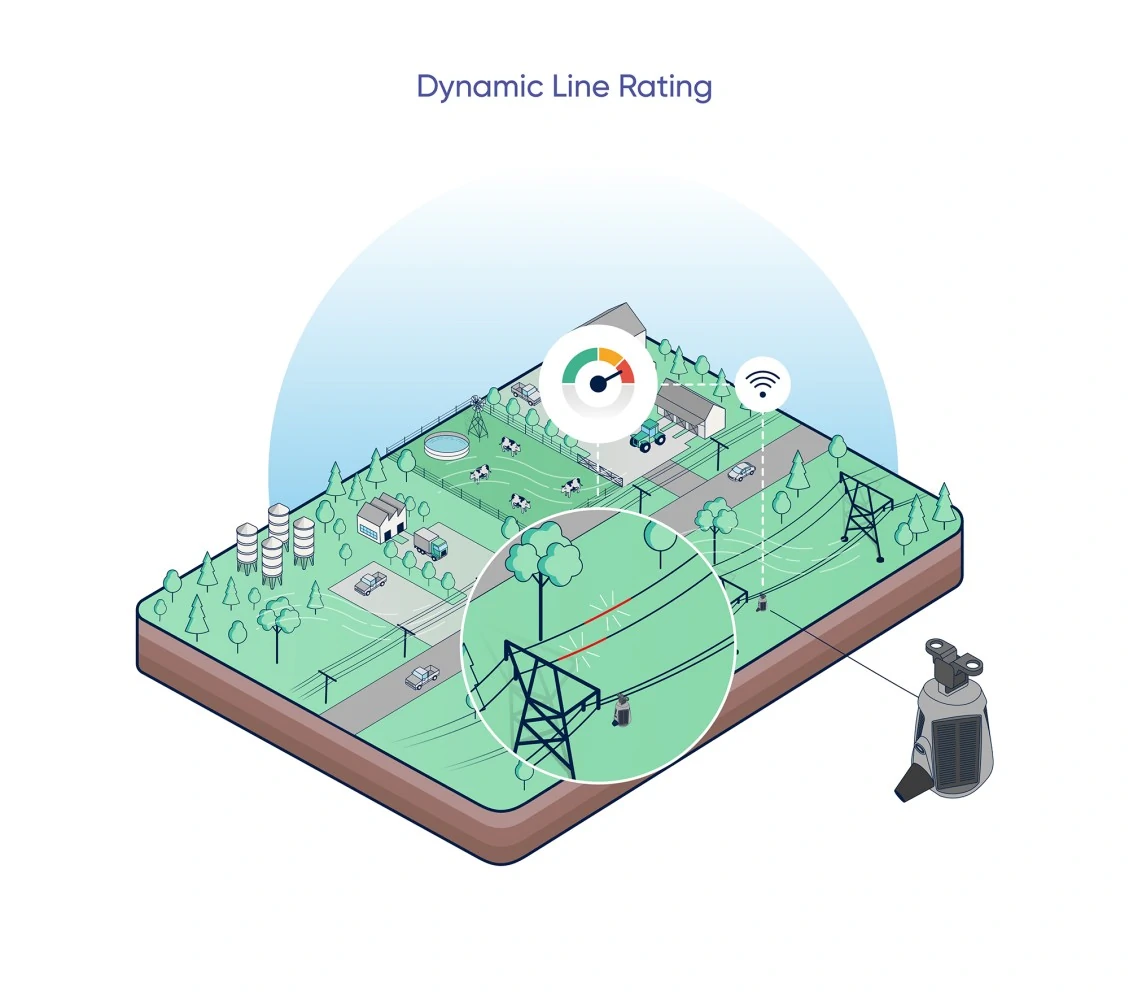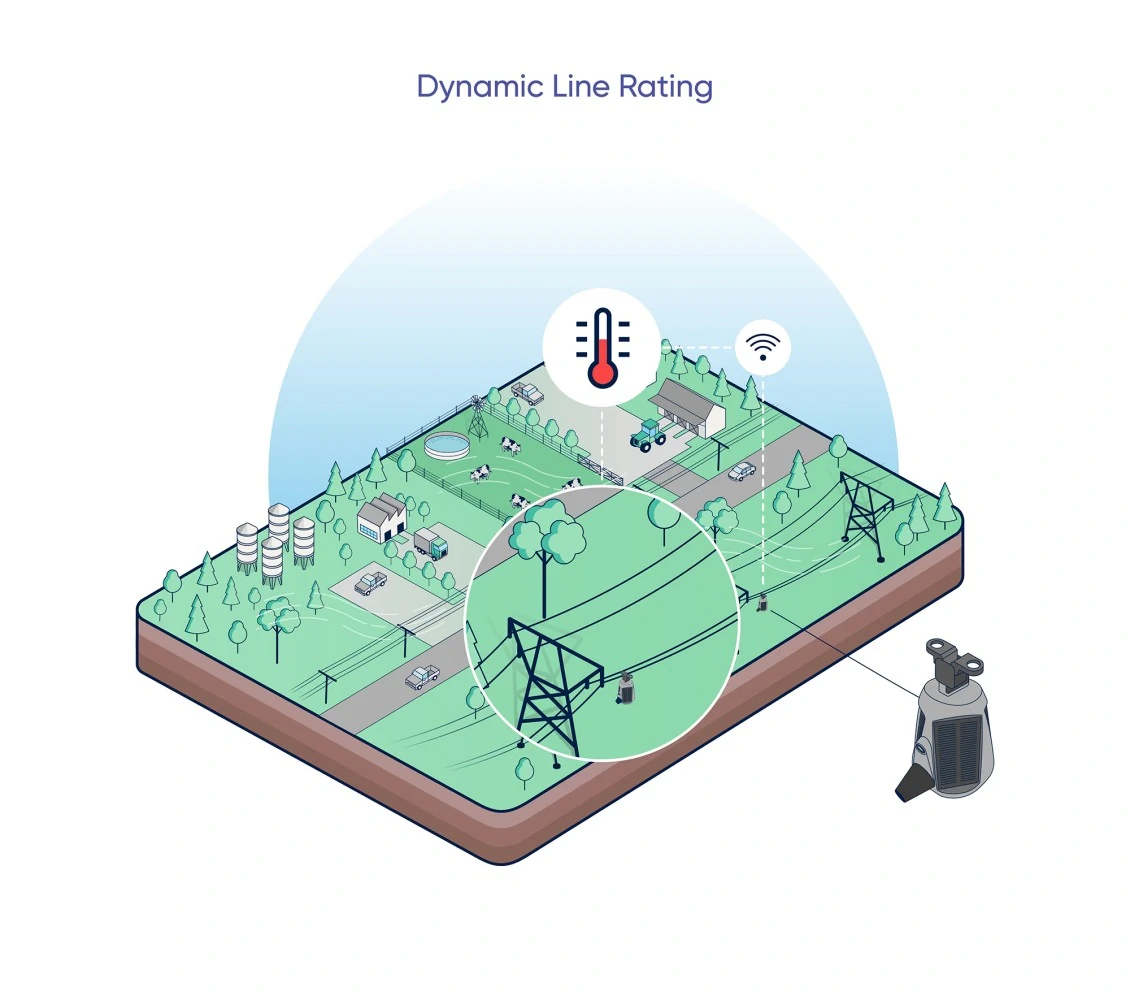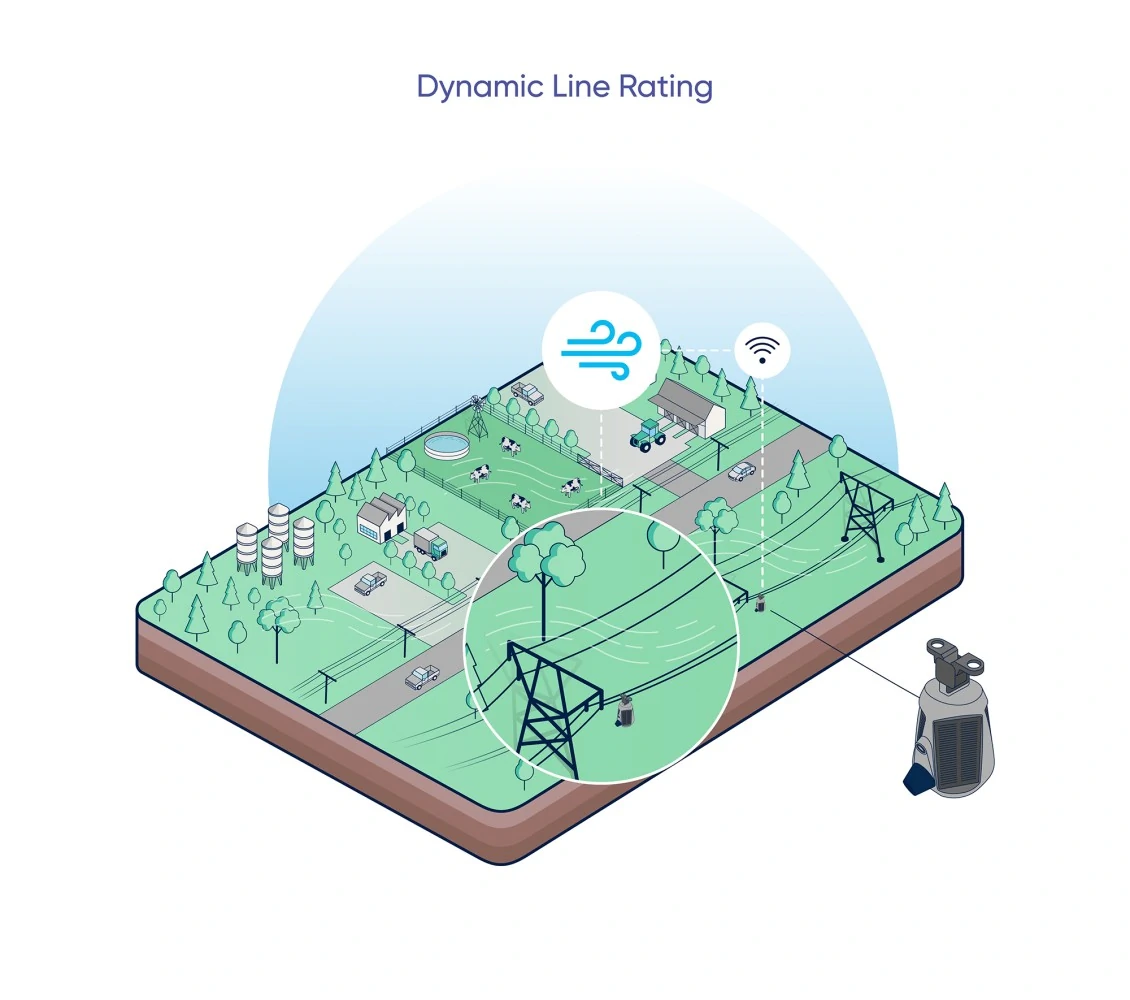Dynamic Line Rating (DLR) is not just another buzzword in the energy sector; it's a transformative technology with the potential to make power transmission more efficient, reliable, and sustainable. With increasing demands on our energy grids and an urgent push toward renewable energy sources, understanding DLR becomes crucial. As the world transitions to smarter, greener grids, understanding DLR is more than just crucial—it's imperative.
What is Dynamic Line Rating (DLR)?
Dynamic Line Rating (DLR) is a technology designed to optimize the electrical carrying capacity of overhead power lines. Unlike traditional static ratings, which rely on conservative, worst-case environmental scenarios, DLR employs real-time data to provide a dynamic, accurate assessment. This allows for a much more efficient use of transmission infrastructure, as it enables power lines to operate closer to their true capacity without sacrificing safety.
Advanced sensors and algorithms play a key role in DLR's effectiveness. Sensors mounted on or near the power lines continuously monitor variables such as ambient temperature, wind speed, and line sag. This data is processed in real-time, allowing grid operators to dynamically adjust the line's capacity. As a result, DLR not only enhances grid efficiency but also facilitates the integration of variable renewable energy sources like wind and solar into the system.

How Does Dynamic Line Rating (DLR) Work?
Dynamic Line Rating (DLR) employs a range of sensors to continuously monitor conditions such as weather, line sag, and temperature. These sensors are strategically placed along transmission and distribution lines and collect data on variables like conductor temperature, line angle, ambient temperature, and wind speed. Advanced software algorithms then analyze this data to determine the line's current capacity. This real-time monitoring enables utilities to optimize the use of existing infrastructure and defer costly upgrades.
Dynamic Line Rating (DLR) and Renewable Energy Integration
The adoption of renewable energy sources like wind and solar poses a unique set of challenges for power transmission. These sources are often variable and located in remote areas, requiring robust and flexible transmission systems. DLR shines in this context by enabling utilities to dynamically adjust line ratings, ensuring that the grid can handle fluctuations in energy production and making it easier to integrate renewable sources.

Challenges and Solutions of Dynamic Line Rating (DLR)
Dynamic Line Rating (DLR) technology is not without its challenges. Accurate weather data is crucial for the system to function effectively, as is coordination among stakeholders like utility companies, regulators, and grid operators. However, these challenges are being actively addressed. Investment in DLR research by organizations like the U.S. Department of Energy and the European Union's Horizon 2020 program underscores the technology's importance and potential for future growth.
Why is DLR important and Why should you be using it?
Adopting Dynamic Line Rating (DLR) delivers multifaceted benefits crucial for modernizing the energy sector. DLR offers a cocktail of benefits—enhanced safety, operational efficiency, sustainability, and cost savings—that make it indispensable for a modern, resilient power grid. By leveraging real-time data, it enables quick decisions that prevent line overloads and faults. Moreover, it enhances the capacity of existing power lines, reducing the need for new, costly infrastructure.
With the ability to dynamically adjust to environmental conditions, DLR also paves the way for seamless integration of renewable energy sources, contributing to global sustainability goals. All these benefits culminate in significant cost savings, cementing DLR as an essential tool for a resilient, efficient, and future-ready power grid.
- Safety: Enables real-time, proactive decisions to reduce risks.
- Efficiency: Maximizes the use of existing lines, avoiding the need for new infrastructure.
- Sustainability: Facilitates easy integration of renewables, aligning with carbon reduction efforts.
- Cost Savings: Leads to economic benefits through efficient line management.
These benefits make DLR an integral component for any power grid focused on long-term sustainability and efficiency.

DLR and Sentrisense: A Commitment to Innovation
For Sentrisense, adopting DLR is more than a technological step—it's a commitment to reshape the energy paradigm. It's not just about boosting current performance; it's about future-proofing your energy infrastructure for a world increasingly reliant on renewable resources.
We bring DLR to life by merging it with our advanced sensor technology and data analytics capabilities. Our service equips your power lines with cutting-edge sensors and feeds this data into algorithms specifically calibrated for your energy network. The end result is a customized DLR implementation that maximizes efficiency, safety, and resilience, right from your control room.
By using Sentrisense's DLR technology, you're not just upgrading your power lines—you're investing in a sustainable, efficient future for your energy grid.
Join the Energy Transition with Sentrisense
Power up your energy future with Sentrisense, where efficiency, reliability, and environmental care go hand in hand. For more insights into making your grid more sustainable and efficient, stay tuned for more content focused on how technologies like DLR can further your performance and sustainability goals.
Discover more about our smart energy solutions. 👉 Visit sentrisense.com.





